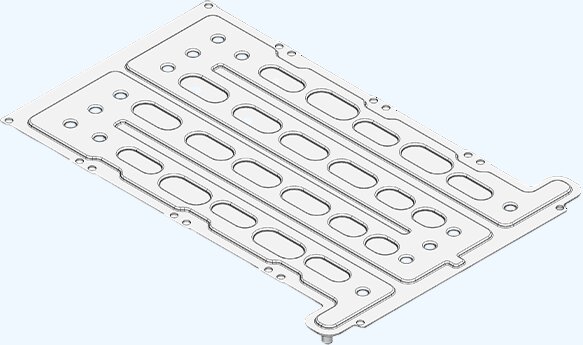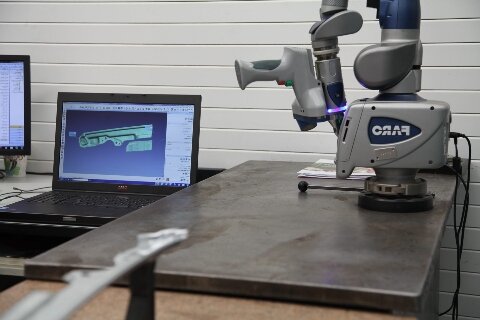El fresado plano es uno de los métodos más utilizados en el mecanizado. Tanto si es diseñador, ingeniero o fabricante, debe conocer este proceso y saber cómo puede beneficiar a sus operaciones. Con el fresado plano, puede lograr una eliminación eficaz del material, pero hay retos y consideraciones a tener en cuenta. Este artículo explica cómo funciona y por qué es una técnica crucial para diversos proyectos.
Este método puede parecer sencillo, pero desempeña un papel fundamental en la fabricación. Es vital para producir piezas con acabados uniformes. Veamos con más detalle los tipos de fresado plano y comparémoslos con otros métodos de mecanizado.
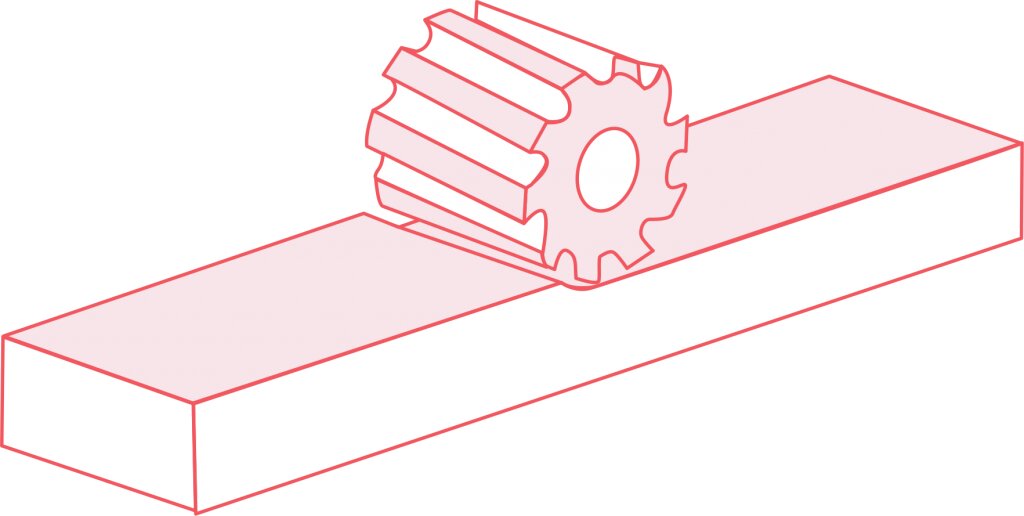
¿Qué es el fresado plano?
El fresado plano es un proceso de mecanizado en el que una fresa giratoria se desplaza a través de una pieza de trabajo para eliminar material y crear una superficie plana. Esta operación se realiza principalmente con fresadoras horizontales, pero en algunos casos también pueden utilizarse máquinas verticales. El objetivo principal del fresado plano es alisar la superficie o cortar ranuras.
El fresado plano utiliza una herramienta giratoria para cortar el material. Al girar, la fresa se desplaza por la superficie de la pieza, que se alimenta en sentido contrario. Ajustando la velocidad y la profundidad del corte, los operarios pueden crear acabados lisos y uniformes. Este proceso es ideal para realizar superficies planas o ranuras de forma consistente.
Tipos de fresas planas
Las fresas planas son cruciales para conseguir precisión y eficacia en el mecanizado. Adentrémonos en los distintos tipos de fresas.
Fresas planas para trabajos pesados
Las fresas planas para trabajos pesados están diseñadas para trabajos de mecanizado robustos y de gran tamaño. Se utilizan cuando es necesario retirar rápidamente grandes cantidades de material. Estas fresas suelen estar fabricadas con materiales resistentes, como acero rápido (HSS) o metal duro.
Las fresas para trabajos pesados son ideales para cortar metales duros o piezas grandes. Los dientes de estas fresas están muy espaciados para eliminar eficazmente las virutas y evitar que se atasquen.
Fresas planas ligeras
Las fresas planas para trabajos ligeros se utilizan para tareas menos exigentes. Están diseñadas para la precisión y funcionan bien con piezas más pequeñas o materiales más blandos. Estas fresas tienen dientes más finos y suelen utilizarse para tareas que requieren un acabado de alta calidad.
Son las mejores para trabajos en los que sólo es necesario eliminar una pequeña cantidad de material y se requiere una superficie más lisa. Las fresas para trabajos ligeros suelen estar fabricadas con materiales como el HSS y se suelen utilizar en sectores que dan prioridad a la precisión.
Proceso de fresado liso: Desglose paso a paso
El proceso de fresado plano implica varios pasos críticos para garantizar la precisión y la calidad. Recorramos cada etapa, desde la configuración hasta la finalización.
Paso 1: Preparación y configuración
Antes de iniciar el proceso de fresado, la pieza debe colocarse firmemente en la máquina. La configuración garantiza que la pieza esté alineada correctamente y que todas las herramientas y materiales estén listos.
Paso 2: Ajustes de la herramienta y la máquina
A continuación, el operario ajusta la fresadora para que cumpla las especificaciones requeridas. Esto incluye elegir la fresa adecuada en función del material y el resultado deseado, fijar la velocidad adecuada y ajustar el avance.
Paso 3: Fresado de la pieza
Una vez que todo está ajustado, la fresa empieza a trabajar. Se desplaza a lo largo de la pieza de trabajo, eliminando material con cada pasada.
Paso 4: Enfriamiento y eliminación de virutas
El fresado genera calor, por lo que los métodos de refrigeración como los fluidos refrigerantes o los chorros de aire reducen la temperatura y evitan daños en la herramienta. Las virutas producidas durante el fresado también se eliminan para evitar que se bloquee el proceso de corte y mantener limpia la superficie.
Paso 5: Finalización del proceso de fresado
Una vez conseguido el acabado superficial deseado, el proceso de fresado está terminado. Los ajustes o procesos adicionales, como desbarbadopara garantizar que el producto final cumple las especificaciones requeridas.
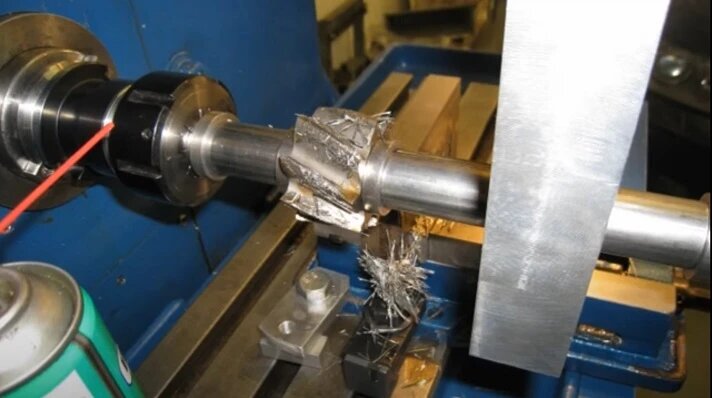
Ventajas y desventajas del fresado plano
El fresado plano tiene varias ventajas, pero también algunos inconvenientes. Comprender ambos puede ayudarle a decidir cuándo es la opción adecuada para sus necesidades de mecanizado.
Ventajas
- Eliminación eficaz del material: El fresado plano permite una rápida eliminación de material, especialmente con fresas de gran potencia. Esto lo hace ideal para piezas más extensas y sencillas.
- Versatilidad: Funciona en diversos materiales, como metales, plásticos y madera. Esto la convierte en una opción flexible para muchos tipos de proyectos.
- Rentable: Con la configuración adecuada, el fresado plano es una opción asequible para la producción en serie y de grandes lotes. Ayuda a reducir el tiempo y el coste por unidad.
- Precisión: Cuando se utilizan equipos y herramientas bien afinados, el fresado plano proporciona una gran precisión. Es excelente para crear superficies lisas y planas.
Desventajas
- Limitado a superficies planas: El fresado plano se utiliza principalmente para crear superficies planas. No es adecuado para formas más complejas o contornos 3D.
- Acabado superficial: Aunque ofrece buenos resultados, el acabado de la superficie puede no ser tan liso como con otros métodos. Pueden ser necesarios pasos de acabado adicionales para detalles más finos.
- Desgaste de herramientas: La fresa puede desgastarse rápidamente, especialmente cuando se trabaja con materiales duros o durante el fresado de alta resistencia. Esto puede suponer mayores costes de mantenimiento y sustitución.
- Limitaciones de tamaño: La capacidad de la máquina limita el tamaño de la pieza. Esto hace que el fresado plano sea menos ideal para componentes más grandes o voluminosos.
Factores que afectan a la eficacia del fresado plano
La eficacia del fresado plano depende de varios factores clave. Exploremos cómo la velocidad, el avance, la estabilidad de la máquina y el mantenimiento de la herramienta contribuyen a optimizar este proceso de mecanizado.
El papel de la velocidad, el avance y la profundidad de corte
La velocidad de corte controla la rapidez con la que gira la fresa, lo que afecta a la rapidez con la que se elimina el material. La velocidad de avance se refiere a la rapidez con la que la pieza se desplaza dentro de la fresa. Esto influye tanto en el acabado superficial como en la fuerza de corte. La profundidad de corte determina la cantidad de material que se elimina en una pasada.
Importancia de la rigidez y la estabilidad de la máquina
Una máquina rígida ayuda a evitar vibraciones durante el fresado, permitiendo que la fresa trabaje con eficacia y produzca resultados precisos. Si la máquina es inestable o se flexiona, puede provocar errores en el producto final y un desgaste más rápido de la herramienta.
Desgaste y mantenimiento de la herramienta en el fresado plano
El desgaste de la herramienta es una parte natural del fresado plano, pero el mantenimiento puede reducir su impacto. A medida que la fresa trabaja, va perdiendo filo, lo que la hace menos eficaz en el corte. Las inspecciones periódicas y la sustitución de las herramientas cuando sea necesario ayudan a mantener el proceso de fresado en buen estado y garantizan los mejores resultados.
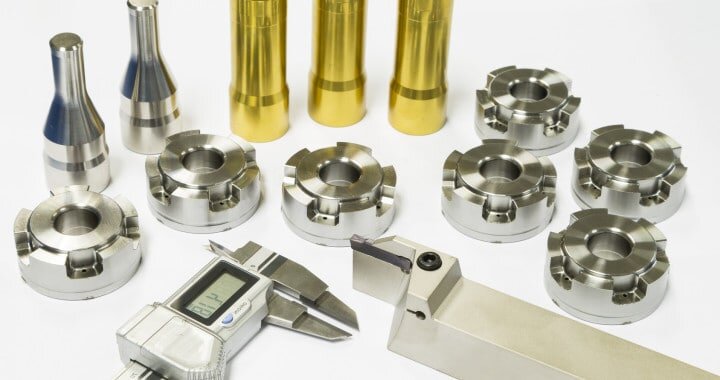
Fresado liso frente a otros procesos de fresado
Cada proceso de fresado tiene sus puntos fuertes y aplicaciones específicas. Comparemos el fresado liso con otros métodos estándar para comprender mejor sus diferencias y elegir el más adecuado para su proyecto.
| Proceso de fresado | Objetivo | Posición de la herramienta | Dirección de corte | El mejor caso de uso |
|---|---|---|---|---|
| Fresado liso | Se utiliza para crear superficies planas y ranuras. | La herramienta gira horizontalmente sobre la pieza. | La herramienta corta a lo largo de la superficie, eliminando el material de manera uniforme. | Eliminación de material a gran escala con menos precisión. |
| Fresado frontal | Se utiliza para crear superficies planas, a menudo con un acabado más liso. | La herramienta gira perpendicularmente a la superficie de la pieza. | La herramienta corta a través de la superficie para mejorar el acabado. | Mayor precisión y acabados más suaves. |
| Fresado de ranuras | Se utiliza para crear ranuras, surcos y otras características internas. | La herramienta gira horizontalmente y corta las características internas. | La herramienta corta a lo largo de la parte interna de la pieza. | Creación de características internas como ranuras y hendiduras. |
| Fresado de superficies | Se utiliza para el acabado de superficies planas y la mejora de la calidad superficial. | La herramienta gira perpendicularmente, centrándose en el acabado de las superficies de la pieza. | La herramienta elimina material para refinar superficies planas. | Trabajos de acabado para lograr un acabado superficial de alta calidad. |
Aplicaciones comunes del fresado plano
El fresado plano es esencial en varias industrias para crear componentes precisos. Exploremos sus principales aplicaciones en diversos sectores.
Industria aeroespacial
En la industria aeroespacial, el fresado plano crea superficies planas y precisas en piezas críticas como alas de avión, componentes de fuselaje y piezas de motor. Estos componentes requieren tolerancias estrechas y acabados lisos para garantizar el rendimiento y la seguridad.
Industria del automóvil
El fresado plano se utiliza en el sector de la automoción para fabricar piezas de motor, componentes de transmisión y otros sistemas mecánicos. Ayuda a producir piezas con superficies lisas y precisas, que son clave para el rendimiento y la fiabilidad de los vehículos.
Industria de la construcción
En la industria de la construcción, el fresado plano crea superficies planas en componentes estructurales como vigascolumnas y marcos. Suele utilizarse para eliminar grandes cantidades de material y preparar piezas para su posterior procesamiento o asamblea.
Industria médica
La industria médica utiliza el fresado plano para fabricar componentes precisos para dispositivos médicos, instrumentos quirúrgicos e implantes. El fresado plano garantiza que estas piezas cumplan las especificaciones exactas y tengan superficies lisas, esenciales para la funcionalidad y la seguridad.
Conclusión
El fresado plano es un proceso de mecanizado flexible y eficaz que se utiliza para crear superficies planas y ranuras con precisión. Es fundamental para fabricar componentes de alta calidad en sectores como el aeroespacial, la automoción, la construcción y el médico.
Si desea saber cómo el fresado plano puede mejorar su producción, póngase en contacto con nosotros para obtener más información o un presupuesto personalizado. Estamos aquí para ayudarle a que su proceso de fabricación sea más eficiente.
Hola, soy Kevin Lee

Durante los últimos 10 años, he estado inmerso en diversas formas de fabricación de chapa metálica, compartiendo aquí ideas interesantes de mis experiencias en diversos talleres.
Póngase en contacto

Kevin Lee
Tengo más de diez años de experiencia profesional en la fabricación de chapas metálicas, especializada en corte por láser, plegado, soldadura y técnicas de tratamiento de superficies. Como Director Técnico de Shengen, me comprometo a resolver complejos retos de fabricación y a impulsar la innovación y la calidad en cada proyecto.

